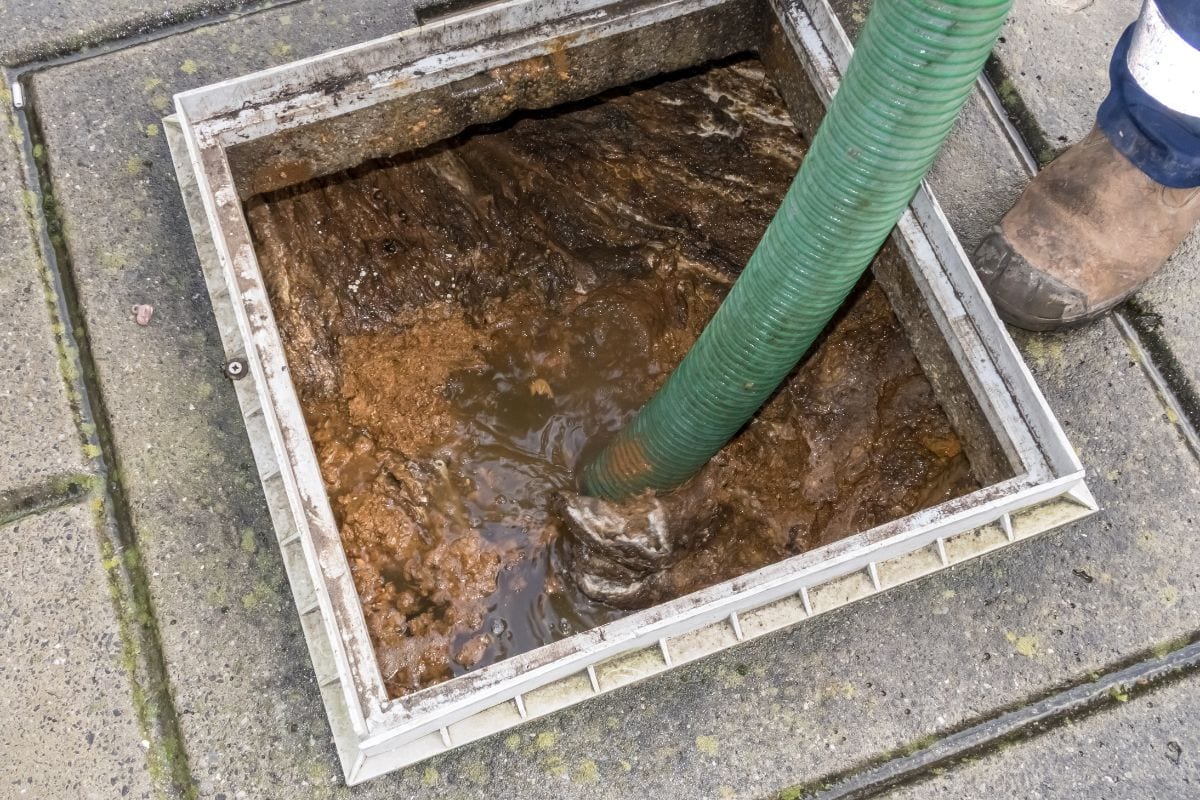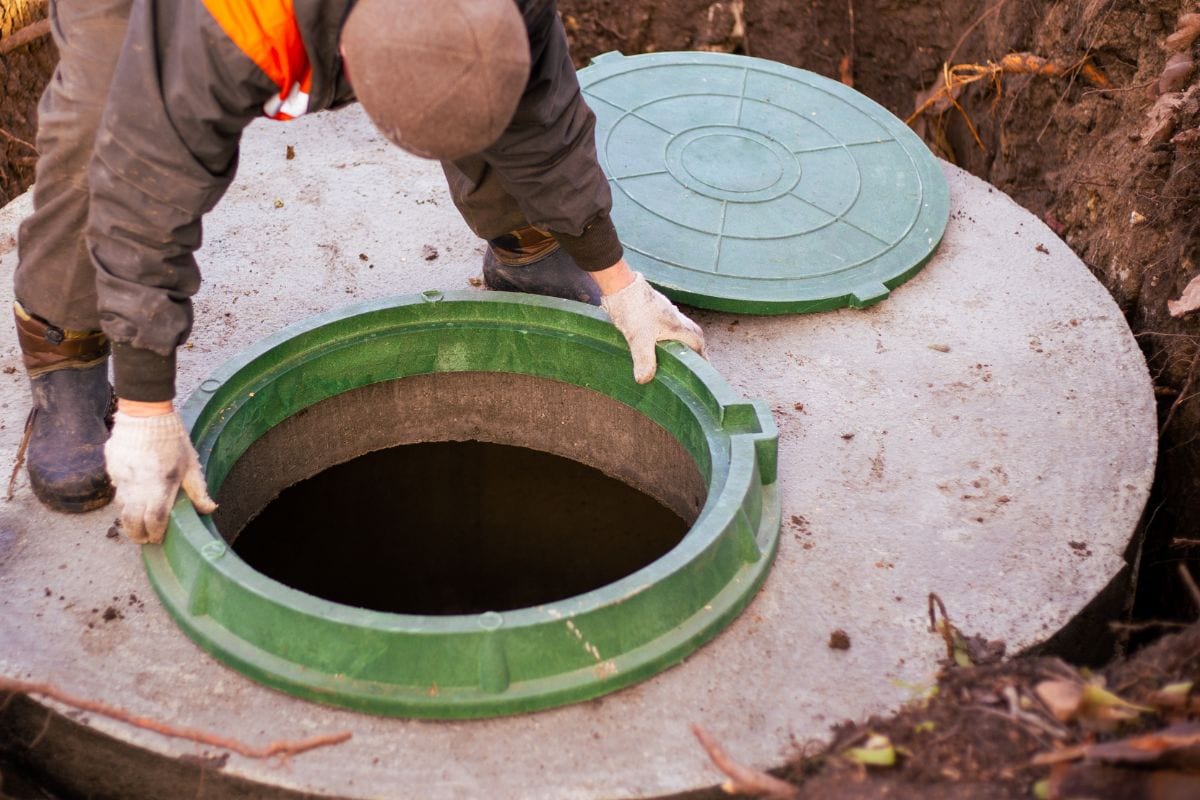A well-maintained cesspool system will provide a home with many years of satisfying service. You cannot, however, prevent any maintenance problems with your cesspool over the years. Fortunately, we researched to review this crucial aspect that every homeowner or potential buyer should consider. We'll share with you what we discovered.
A homeowner should consider many maintenance issues with cesspools, such as the fact that cesspools only have minimal waste filtration, and all bacteria will be directly disposed of in the soil. Another is that they are prone to clogging. The older the cesspool, the more likely it is to clog, and because of the accumulated solid waste, it can also lead to your cesspool tank overflowing.
Continue reading to learn what a cesspool is and the typical maintenance problems of owning one. We will also go over cesspool maintenance recommendations, how frequently to pump it, and what to think about when purchasing a home that already has one. We'll also discuss how to clean your cesspool. So keep reading.
The Nature of Cesspool

The first version of the modern septic tank system was a cesspool. The idea involves digging a hole in the ground and lining it with brick or concrete. The pit receives wastewater from the house, stored there until it seeps into the ground through the holes at the sides.
The typical way to construct is from sections of concrete cylinders with holes at the sides. Except for the holes, they resemble a well liner and are buried underground. Additionally, pre-formed tanks with perforated exteriors are occasionally used. These, however, are pretty old and are now very uncommon.
The Common Maintenance Problems With Cesspool

Cesspools require annual upkeep, and if overlooked, can have issues like sewage backing up into your home, smelling bad, or even flooding your property. The following is a list of the typical maintenance issues that come with having a cesspool.
Minimal Waste Filtration Or Breakdown
The lack of waste filtration in cesspools, which results in all bacteria and debris being dumped directly into the soil, is one of the main issues with these.
For coastal communities where the waste can seep into the water, this is especially bad. Cesspools within a specified distance of the water are forbidden by law, and many coastal localities have established ordinances demanding their quick dismantling.
Residents who live close to lakes and rivers will also need to consider this. Cesspools can have a significant impact on water quality, leading many municipalities to establish protective measures for their rivers and lakes, much like coastal cities have.
Clogged
The longer cesspools are used, the more often a scum layer forms on them, which is another problem. This will prevent the cesspool from properly draining as the holes in the sides become clogged. The design makes it more prone to clogging than other drainage methods.
Things you flush into a cesspool need to be handled with caution. Items such as feminine hygiene products, sanitary wipes, and other paper products aside from toilet paper and plastic must be disposed of properly.
Full Cesspool Tank
An accumulation of solid waste can cause your tank to overflow if it isn't pumped regularly. An odor in the toilet or near the tank that persists is a common early sign of this issue. You may be able to smell this decay more clearly in warm weather.
Another common sign is a slow-draining toilet or one that frequently clogs. Plunging and drain cleaners are ineffective if the problem is with the septic tank and not just a clogged drain.
The final sign that the tank is full is wet ground above it. In severe cases, the floodwaters may even contain visible toilet paper or sewage. Any plants in the flooded area could become ill or die, leaving bald areas on lawns or other unsightly effects.
Click to see this plunger on Amazon.
What Should You Consider When Buying A House With A Cesspool?

It will be a good idea to hire a qualified professional to evaluate the septic system and leach field if you are thinking about purchasing a home with a cesspool or septic tank to make sure there are no issues or costly repairs needed. No matter what system is in place, this should be done.
You should also consider the cost of maintenance while evaluating a house with a cesspool. Be aware of this expense to include it in your budget because it will need to be pumped often. To know how frequently the cesspool requires pumping, inquire with the previous owner about this maintenance routine.
Know any regulations that apply to cesspools in the state you're in. If you cannot lawfully fix it, you can soon be faced with a high replacement cost.
Lastly, ensure that the duty is covered in the sales agreement if the state the house is in needs a cesspool to be replaced during the transaction.
How Often Should Your Cesspool Be Pumped?

Cesspools typically need to be pumped every 3 to 5 years. Failing to do so can lead to costly repairs and public health risks. When the enzymes breaking down sediments are interrupted, more solids build up in the septic tank, causing sewage to back up.
What Are Some Cesspool Cleaning Methods?

There are several ways to clear up your septic system, each with advantages and disadvantages. Check the laws in your city and state before attempting to empty the cesspool.
Pumping
The method most frequently used to empty cesspools is a large pumping vehicle. Using this truck, your cesspool is dumped into a big storage tank.
This estimate doesn't account for additional costs like filling up and digging the ground above the tank. If you're doing a big project, you can excavate the manhole cover yourself or use a backhoe.
The general standard approach for cleaning up septic tanks is pumping, which is advised every 3 to 5 years. At least once every five years, the contents of even large, rarely used tanks should be pumped.
If they are used frequently, some smaller tanks can require annual pumping. Do not forget that in many states, it is illegal to pump a cesspool without the appropriate certification.
Hydro-Jetting
Another alternative technology used in wells to reduce or eliminate the need for pumping is hydro-jetting. By blasting water into the dirt at the bottom of the cesspool under high pressure, the sediments are broken up. The quickest recovery time is provided by this method when cleaning a well.
Aeration
Sulfuric acid is added to the well or tank during aeration as a chemical replacement for removing waste from cesspools. Sludge and solid waste are disintegrated by the acid, allowing air to pass through.
As a result, less pumping is needed to dissolve the waste. The disadvantage of this approach is that sulfuric acid is corrosive and could damage your septic system if mishandled.
What Are Some Cesspool Management Tips?

Our cesspools are something we frequently take for granted, but maintaining your cesspool is essential to caring for your home or place of business. To prevent your cesspool from overflowing, slowing drainage, or backing up, you must periodically repair and pump your tank.
The necessary procedures for maintaining your cesspool are outlined below, along with some significant warning signals to look out for.
Maintaining Your Cesspool Tank
To maintain the health of your wastewater system and prevent malfunctions or overflows, tank maintenance is essential. You may manage your cesspool tank and avoid obstructions by using several vital measures.
Fix Any Leaky Fixtures
When a faucet, toilet, or other fixture leaks, fix it immediately. The extra water might clog your cesspool, slow down the drainage, or even cause it to overflow. If a leak is not repaired, you might need to have your cesspool pumped sooner than necessary.
Avoid Draining Any Solid Items
Don't put anything down your drain that it can't handle. You'd be surprised at how rapidly a cesspool may fill up when solid items are filling it daily. This will cause clogging and premature solid waste filling of your cesspool.
Grease, oil, coffee grinds, baby wipes, and other solid waste cannot be disposed of in your cesspool. To prevent sediments from clogging your drains and cesspool, it is also preferable to avoid using a garbage disposal, even if it might seem like a good idea.
Avoid Constructing It Near The Gutter
A cesspool can overflow during heavy rains, so be cautious to prevent it from that. Verify that your cesspool is not flooded by your gutters and drainpipes close to your tank.
To prevent rainwater from flowing into your cesspool directly, it's crucial to avoid building it on a hill when doing so. The optimum places for your cesspool to be installed are on flat terrain or where rainwater runs away from the cesspool.
Conclusion

The long-term costs of maintaining a cesspool can be high, and it is not the most environmentally friendly choice because untreated wastewater can overflow into the surrounding area. If you want to purchase a home with one, thoroughly inspect the cesspool to ensure you won't have to make any repairs. Identify any leaks in an existing cesspool and fix them immediately to prevent further issues.
If you found this post helpful, check out these related posts:
Basic Plumbing Terminology For Home Maintenance – What Should You Know?
How Do You Do A Dye Test On A Septic System? [Step By Step For Homeowners]

